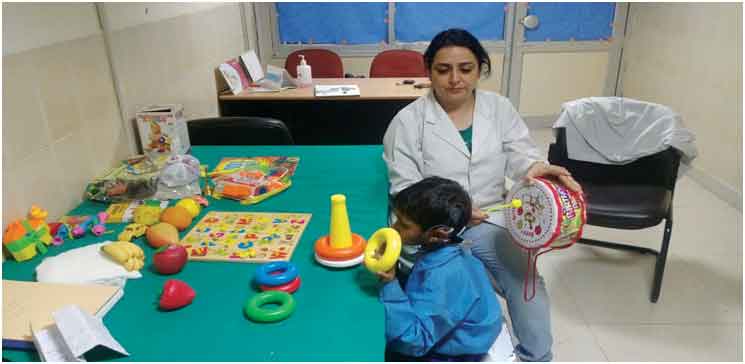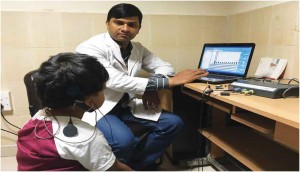Handle with Care
Post-operative speech and rehabilitation programme is the most important part of Cochlear Implant, a unique method to re-construct audition for patients with severe to profound hearing loss
By Sanjeev Kumar
The success of the cochlear implant depends on good speech hearing rehabilitation. The implanted child needs to understand the auditory signals perceived by his brain to comprehend the speech and communicate using acquired speech and language abilities.
After six weeks of the operation, the audiologist fits the external speech processor and switch on the device. Thereafter, he connects it to the computer and adjusts the settings on the device. As soon as, the device gets switched on, the speech processor starts sending signals to the electrodes in the cochlea for the first time. After this, the speech microphone of the processor is activated and the patient starts hearing for the first time and it is usually like buzzing sound or mechanical sounds.
Speech and Hearing rehabilitation sessions after Mapping
Mapping or MAPping is the term used for programming a cochlear implant according to the needs of its user. The program actually stimulates the electrodes of the implant and there by determine the exact amount of signal (electric activity) required for the patient to optimize the cochlear implant to any sound. This is done by connecting the cochlear implant processor to a computer. The computer than makes changes in the input to the electrodes array that is implanted into the cochlea. By giving series of acoustic signals in form “beeps” and measuring the patient response, the audiologist adjusts the T- and C- levels for each electrode. T-Levels, or Thresholds, are the softest sounds the cochlear implant users can detect while C-Levels are Comfortable loudness levels that are tolerable for the implant users.
The audiologist also adjusts the stimulation rate or programming strategy that is used to translate acoustic sound into the correct combination of electrode stimulations to give the cochlear implant user the same sensation of sound which a normal person would have.
After the implant is ‘switched on’, the patient usually takes few weeks to get used to hearing with the implant. At the same time, the audiologists keep on making adjustments to the computer settings as per the requirement and the performance of the child.
Simultaneously the implanted child receives lessons from a Speech & Hearing Therapist who helps in identifying different sounds and distinguishes vowels and consonants.
Overall, rehabilitation is an important stage of cochlear implant where the patient learns to make meaningful response to various sound stimuli coming to the brain. Speech therapy is an important part of rehabilitation process where the child learns about oro-motor control to produce meaningful words and sentences.
The training is usually longer and more complicated in the case of children who are born deaf. While recently deafened adults generally adapt faster to the use of their implant.
(The author is Audiologist, Cochlear Implant Program, Lok Nayak Hospital, New Delhi)


